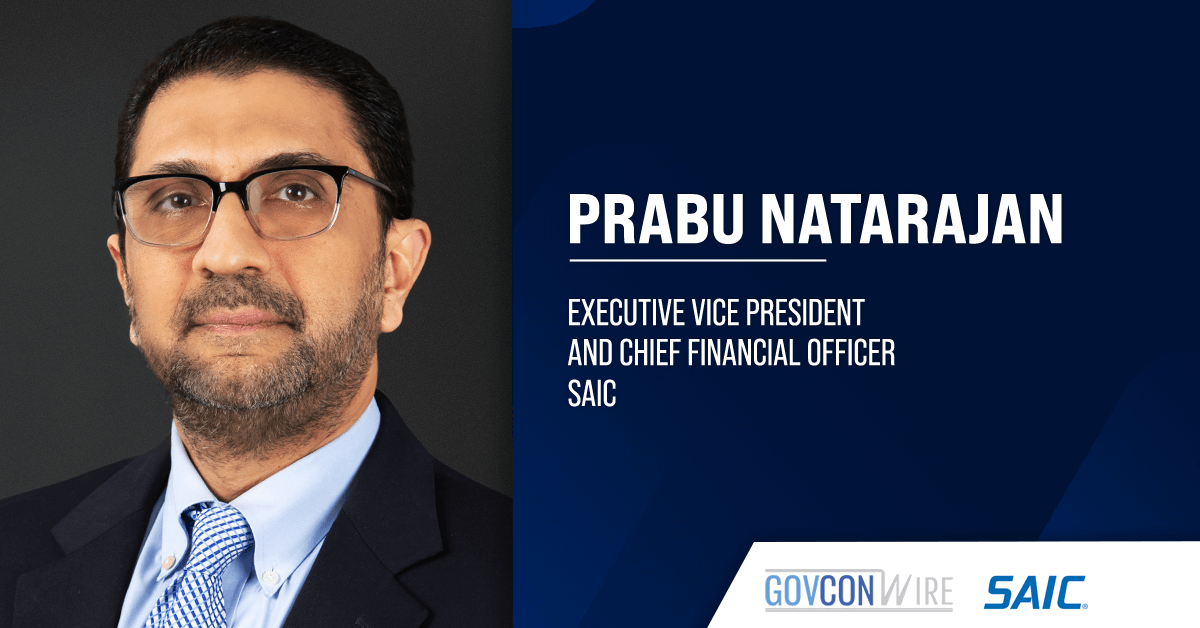SAIC reported $1.84 billion in revenue during the fourth quarter of fiscal year 2025, reflecting a 5.8 percent organic growth, and saw its full-year FY 2025 revenue increase by 3.1 percent organically to $7.48 billion.
Q4, Full FY25 Financial Highlights
In an earnings statement published Monday, the Reston, Virginia-based government technology services contractor said it posted $1.3 billion in Q4 net bookings with a book-to-bill ratio of 0.7 and approximately $6.6 billion in net bookings for the year, reflecting a book-to-bill ratio of 0.9.
The company closed the fiscal year with an estimated total backlog of about $21.9 billion, of which $3.4 billion was funded.
Fourth-quarter net income was $98 million, while diluted earnings per share and adjusted diluted EPS for the quarter were $2 and $2.57, respectively. Adjusted earnings before interest, taxes, depreciation and amortization, or EBITDA, for the quarter was $177 million, or 9.6 percent of revenue.
For the full fiscal year, SAIC recorded $710 million in adjusted EBITDA, $362 million in net income, $7.17 in diluted EPS and $9.13 in adjusted diluted EPS.
Significant Contract Wins
SAIC received new and recompete contracts in the last quarter, including a $187 million task order for the sustainment of the Defense Readiness Reporting System awarded under the $1.8 billion Personnel and Readiness Infrastructure Support Management, or PRISM, contract vehicle with the Department of Defense and $480 million in contracts with space and intelligence agencies.
Subsequent to the end of the fourth quarter, the company secured the $1.8 billion System Software Lifecycle Engineering contract with the U.S. Army’s Combat Capabilities Development Command Aviation and Missile Center for software development, mission engineering, integration and other life cycle support services.
CFO Prabu Natarajan on FY 2026 Guidance, Capital Deployment Plans
At Monday’s earnings conference call, SAIC Chief Financial Officer Prabu Natarajan said the company is raising its FY 2026 revenue guidance from $7.6 billion to $7.75 billion, reflecting an organic growth of 3 percent at the midpoint.
He told analysts that the company expects growth to accelerate from 1 percent to 3 percent during the first two quarters of the fiscal year to 2 percent to 3 percent in the second half.
“This cadence is driven primarily by the timing of recompete headwinds, which are more pronounced in the first quarter and ease through the year,” Natarajan added.
The SAIC executive vice president noted that the company expects to record 9.4 percent to 9.6 percent in adjusted EBITDA margin, adjusted diluted EPS of between $9.10 and $9.30 and free cash flow of $510 million to $530 million. He also touched on the contractor’s share repurchase plans.
“We expect to repurchase between $350 million to $400 million in FY 2026 and FY 2027 while maintaining sufficient capacity for capability-focused M&A or additional share repurchases. This is unchanged from our prior framework,” the CFO stated.
CEO on Procurement Environment, SAIC’s Tech Integration Capability
Toni Townes-Whitley, CEO of SAIC and a 2025 Wash100 awardee, told analysts that the company expects “changes to the procurement environment that will place a greater emphasis on mission criticality and the infusion of cutting-edge technology as well as outcome-based contracting.”
“We view this as an acceleration — perhaps a rapid acceleration of prior trends and one that our strategy and investments are designed to address,” she added.
During the call, the chief executive cited government programs that demonstrate SAIC’s ability to develop and integrate technology platforms “at the speed of the mission,” including its work with CBP’s Targeting and Analysis Systems Program Directorate, or TASPD.
“For Customs and Border Protection, on the TASPD program, we have rolled out facial and touch-less fingerprint technology to over 5,000 ICE agents fully integrated with our cloud, machine learning and AI capabilities to rapidly identify shipments and travelers more efficiently and accurately for additional inspection,” Townes-Whitley said.
For the U.S. Space Force’s Ground-Based Radar Maintenance and Sustainment Services, or GMASS, program, the SAIC official stated that the company has used on-demand software development and digital engineering platforms to upgrade radar systems in the U.S. and worldwide.
“Our performance has contributed to GMASS ramping to full run-rate revenue faster than we had originally anticipated,” she added.



